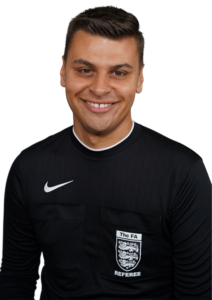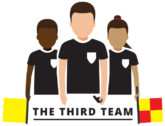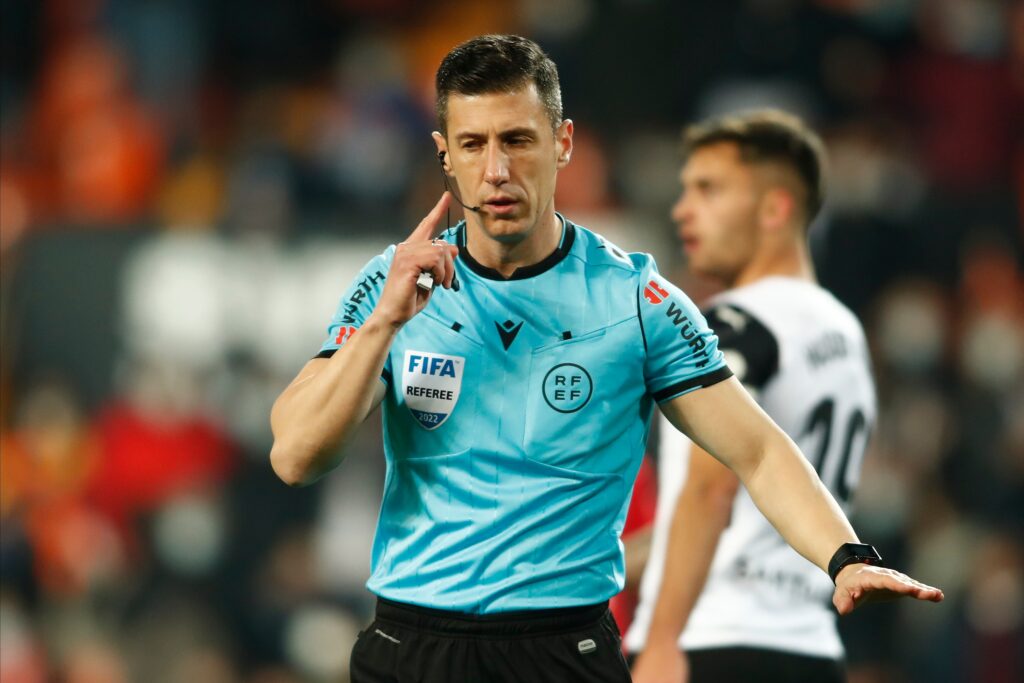In a study with 200 referees, we found those who were trained to use a combination of cognitive specific imagery and motivational self-talk significantly reduced their reaction times almost instantly. In fact, some participants experienced a decrease in response time of over 20%, or going from identifying a foul in 0.737 seconds to 0.659 seconds on average. On the field of play, this means seeing a potential situation in which a foul may happen and positioning himself into a better viewing angle faster as well as increasing the likelihood of making a correct decision. Many officials believe that response time, even hundredths of a second, is often the difference between a correct and incorrect decision.
Research has shown that the cognitive specific imagery, or “film,” many of the participants created included seeing their foot move forward towards the decision upon the researcher’s timer illuminating. Participants also selected motivational self-talk cues, such as fast, explode, and decide, and utilised them during their imagery.
Interestingly enough, many control group participants had slower response times when they were tested post-intervention. This means the group who did not receive any training or instruction on mental skills actually became slower. Additionally, the control group experienced a more anxiety, as evidenced by statements such as, “I actually felt nervous” and “I kept thinking about my dynamic movements needing to be faster.” These suggest that control group participants tried to excessively control their movements rather than just being in the moment and letting it happen.
Many referees already use some type of imagery or self-talk, but often run a huge risk of degrading their performance because they leave the content or quality of these skills up to chance. With a better understanding of these tools, sport psychology professionals can match a specific type of imagery and self-talk to the needs or desires of the officials to improve performance.
How to use cognitive specific imagery for faster response times
The key to imagery with this objective is for referees to be in total control of the “film” they play in their heads. They can make their film more amazing than any Hollywood motion picture by tailoring what they mentally experience to a specific situation and making it as realistic as possible. It’s also important for the film to be individualised and meaningful to the official. For example, practice visualising themself successfully recognising foul play.
Vividness and controllability of the imagery are two methods to help referees become more successful with their practice. Think of vividness as how sharp and detailed the official experiences the imagery, which in turn creates more of an emotional connection to the imagined experience. This connection helps referees to “feel” the scenario by incorporating all of their senses and to regulate their emotions prior to stepping into a matchday environment.
Controllability is the official’s capacity to control or make changes to the imagery as it is plays back in their mind. This component is useful in helping referees practice overcoming mistakes and reacting to unexpected situations. These situations can be any adversity an official may face out in the middle, such as perceiving that a player may aggressively challenge a decision that has been made. Referees can see how they might naturally react and then practice controlling how they will respond in a game if this happens, such as pausing to recover, recognising the reaction is out of their control, and focusing on making the next decision in the game. By mentally making and practicing these choices, it helps officials respond effectively in actual situations, faster.
How to use motivational self-talk for faster response times
Research has shown that to gain the maximum benefit from motivational self-talk, referees should:
Use a cue that is both meaningful and functionally fits the task, which creates a connection and enables self-talk to be more useful and relevant. For example, in our study of officials, we chose the terms explode and fast. These terms match the explosive movement required to be in position deliver a key match decision (KMD) quickly and effectively.
Keep cues short. Decide on one or two words (e.g., drive, crab, sprint) that are most meaningful to the task and referee. An added benefit of keeping it short is that it makes the cue easier to remember.
Make the statement loud, whether it is in their head or verbalised. “Loud” self-talk cues help officials move their focus away from their technical mechanics. This shift is needed for faster response times and more explosive movements.
What we say to ourselves and experience in our minds matters as referees. We can leave this dialogue up to chance or we can take a more purposeful approach to improve our performance. I would advise any match official or their coach to take calculated steps to create their own “film” and motivational thoughts. Think of imagery and self-talk as food for the mind. What type of food will fuel your mind and prepare you to perform at your best?
At The Third Team I work individually and in collaboration with different professionals where I have developed workshops and 1-2-1 sessions associated with Resilience and Mental Toughness Development to help referees. The workshops and 1-2-1 sessions are interactive, where referees are encouraged to open up and share their experiences to help themselves and each other.
Feel free to contact me if you’d like to know more about my workshops or 1-2-1 sessions and how I could help you or your officials.
Best Wishes,

Nathan Sherratt
Referee Educator & Managing Director of The Third Team

Nathan Sherratt
Nathan Sherratt, Referee Educator, Resilience Trainer and Managing Director of The Third Team. A Mental Toughness Practitioner based in Tyne & Wear, North East England.

